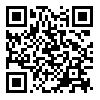Volume 6, Issue 3 (Vol6,No3(21) 2025)
2025, 6(3): 0-0 |
Back to browse issues page
Ethics code: IR.IAU.SRB.REC.1404.054
Download citation:
BibTeX | RIS | EndNote | Medlars | ProCite | Reference Manager | RefWorks
Send citation to:



BibTeX | RIS | EndNote | Medlars | ProCite | Reference Manager | RefWorks
Send citation to:
Maleki M, Karimzadeh M, GhorbanJahromi R, Amiri M. (2025). Investigating the effectiveness of the developed artistic thinking training protocol on the aesthetic thinking of second-year elementary school girls: A quasi-experimental study. Journal of Childhood Health and Education. 6(3),
URL: http://jeche.ir/article-1-355-en.html
URL: http://jeche.ir/article-1-355-en.html
1- Ph.D. student of educational psychology, Department of Psychology, Science and Research Branch, Islamic Azad University, Tehran, Iran
2- Associate Professor, Preschool education Department, University of Social Welfare and Rehabilitation Sciences, Tehran, Iran.
3- Assistant Professor, Department of Psychology, Science and Research Branch, Islamic Azad University, Tehran, Iran
4- Associate Professor, Faculty of Humanities Sciences, Zanjan University, Zanjan, Iran.
2- Associate Professor, Preschool education Department, University of Social Welfare and Rehabilitation Sciences, Tehran, Iran.
3- Assistant Professor, Department of Psychology, Science and Research Branch, Islamic Azad University, Tehran, Iran
4- Associate Professor, Faculty of Humanities Sciences, Zanjan University, Zanjan, Iran.
Abstract: (390 Views)
Introduction: Cultivating aesthetic thinking in elementary school is associated with both improved academic performance and improved mental health, and this type of thinking is strengthened by art education. Therefore, paying attention to artistic thinking education in elementary school is of great importance. As a result, the present study was conducted with the aim of determining the effectiveness of the artistic thinking educational package protocol on aesthetic thinking of female students in the second grade of elementary school.
Research Method: The research method was a quasi-experimental study with a pre-test-post-test design and a control group. The statistical population was female students in the second grade of elementary school in Tehran in 2024-2025, from which 24 people were selected conveniently and randomly assigned to two experimental (12 people) and control (12 people) groups. The training consisted of 5 90-minute sessions. The Aesthetic Thinking Questionnaire (1995) was used to collect data. SPSS-26 software and the analysis of variance with repeated measures were used to analyze the data.
Findings: The results of repeated measures analysis of variance showed that teaching artistic thinking is associated with improving aesthetic thinking in female students.
Discussion and Conclusion: Considering the important role of aesthetic thinking in improving academic performance and areas related to mental health and the important role of teaching artistic thinking in improving this type of thinking, it is better to use this type of education purposefully among elementary school students.
Research Method: The research method was a quasi-experimental study with a pre-test-post-test design and a control group. The statistical population was female students in the second grade of elementary school in Tehran in 2024-2025, from which 24 people were selected conveniently and randomly assigned to two experimental (12 people) and control (12 people) groups. The training consisted of 5 90-minute sessions. The Aesthetic Thinking Questionnaire (1995) was used to collect data. SPSS-26 software and the analysis of variance with repeated measures were used to analyze the data.
Findings: The results of repeated measures analysis of variance showed that teaching artistic thinking is associated with improving aesthetic thinking in female students.
Discussion and Conclusion: Considering the important role of aesthetic thinking in improving academic performance and areas related to mental health and the important role of teaching artistic thinking in improving this type of thinking, it is better to use this type of education purposefully among elementary school students.
Type of Study: Research |
Subject:
Special
Received: 2025/07/9 | Accepted: 2025/10/7 | Published: 2025/11/1
Received: 2025/07/9 | Accepted: 2025/10/7 | Published: 2025/11/1
Send email to the article author
| Rights and permissions | |
 |
This work is licensed under a Creative Commons Attribution-NonCommercial 4.0 International License. |



